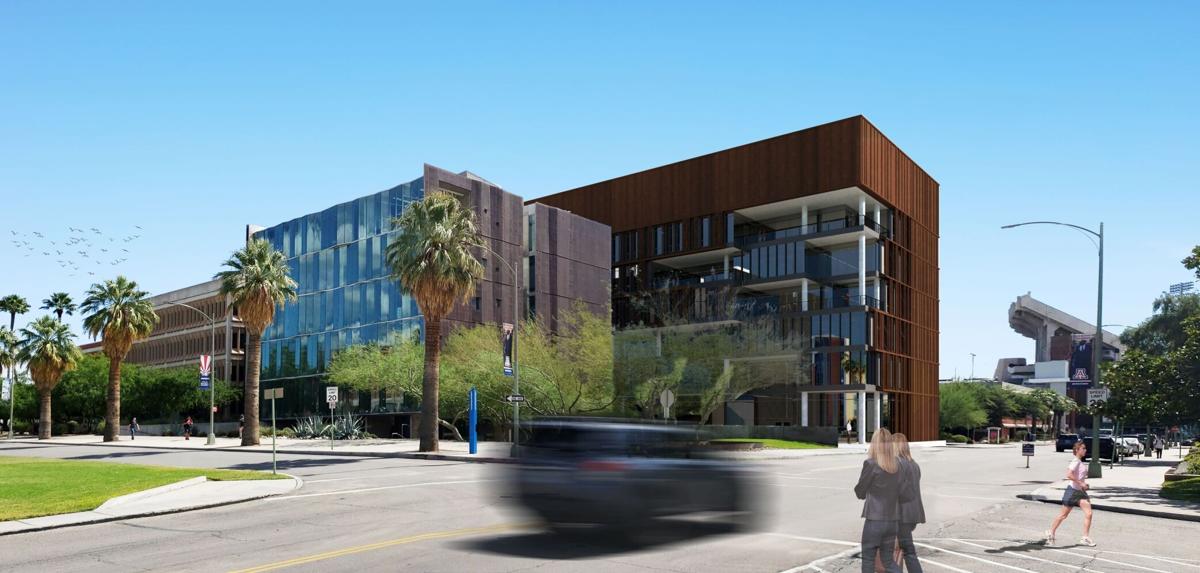The seven-story building skeleton rising in between McKale Center and the Main Library on the UA campus will soon be home to researchers hoping to develop the ultimate internet.
But it will be more than a year before anyone starts working in the $99 million Grand Challenges Research Building at the University of Arizona.
Located at East University Boulevard and North Cherry Avenue, the 108,000-square-foot building is the newest addition to the Wyant College of Optical Sciences complex.
The College of Optical Sciences was deeply involved in the design process of the building and has hired 14 new staff members, according to Dean Thomas L. Koch. Three floors of the addition will be dedicated solely to optical sciences.
“We’re growing in response to the demand for our students, staff, technology and research. We need space and it’s wonderful to get,” said Koch. “It’s kind of custom-made to do what we need. It’s fabulous.”
A key component of the Grand Challenges building is the Center for Quantum Networks, a multi-year, multi-million-dollar project through the National Science Foundation that will lay the foundations for the quantum internet. The quantum internet will revolutionize “how humankind computes, communicates and senses the world by creating a fabric to connect quantum computers, data centers and gadgets” using high capacity “quantum bits,” or qubits, according to a UA news release.
The quantum internet also brings better security and a larger capacity to carry data, according to John O’Neil, the vice president of the UA’s Research, Innovation & Impact who is leading the Grand Challenges project.
Aside from the network and the designated optical science floors, the rest of the building will be used as innovation space controlled by O’Neil’s department, he said.
The Grand Challenges Research Building will accelerate the university’s work in space safety, security and sustainability, and bring breakthroughs in biomedical and biostatistics while also expanding on the UA’s capacity for leading edge artificial intelligence, O’Neil said.
With students back at UA for the fall semester, here's a look at the Tucson campus over the years compared to now.
UA’s research conducted in fields such as communication and computing, medical innovation, optical, space and health sciences generates nearly $800 million in revenue each year to the university, according to O’Neil.
Projects under Research, Innovation & Impact include UA Tech Park, UA Center for Innovation, Arizona Space Institute and the Arizona Institute for Resilient Environments and Societies.
“I believe the core strength of the University of Arizona is its unique ability to know our world and to help show the resilient ways forward for mankind,” O’Neil said. “The GCRB will expand our horizons and research impact.”
The project received a $28 million endowment from donors including the founder and former dean of the College of Optical Sciences James Wyant, Koch said.
It’s scheduled to be completed by January 2024.





